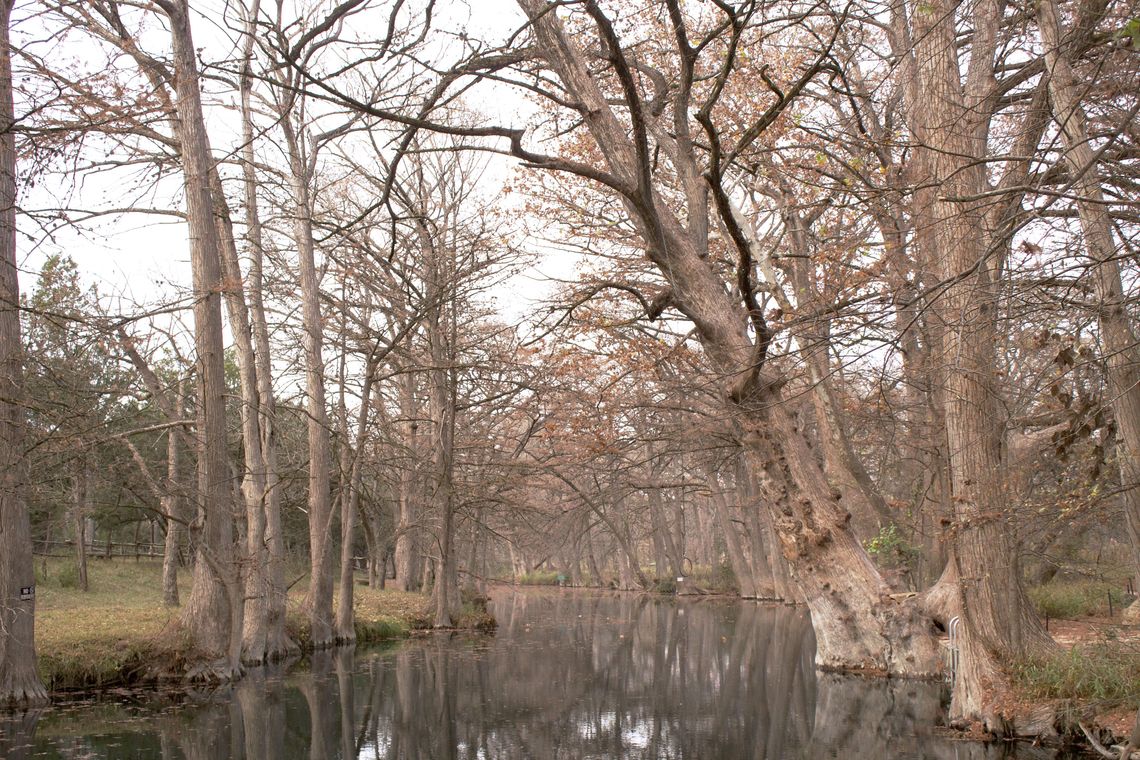Oak wilt, an often-deadly tree fungus, has been found in a corner of Blue Hole Regional Park, according to Wimberley parks and recreation director Richard Shaver.
Shaver made the announcement as part of a budget amendment request for his department at the Wimberley City Council meeting on Thursday, Dec. 1. In order to address the oak tree fungus, Shaver requested — and was granted — $15,000. The department is now selecting contractors to help with the oak wilt mitigation effort.
Blue Hole Regional Park, a natural, spring-fed swimming hole, is mostly known for its iconic cypress trees which line the swimming area. However, as with a large swath of the Texas Hill Country, it is also home to a number of large and established oak trees, many of which are now at risk of contracting oak wilt.








